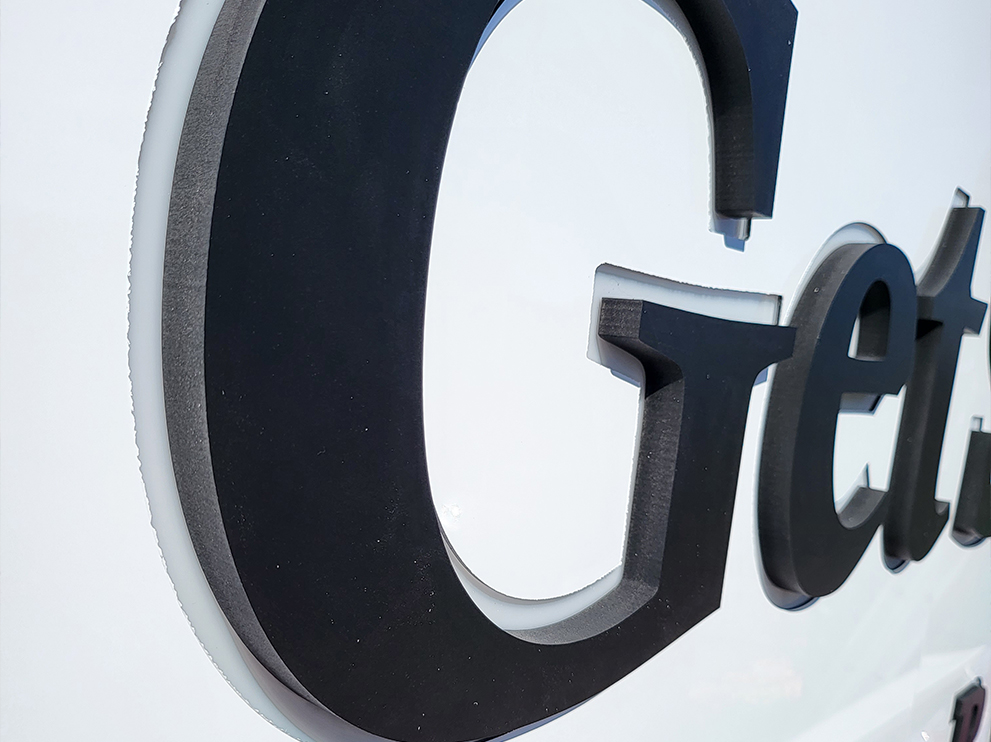
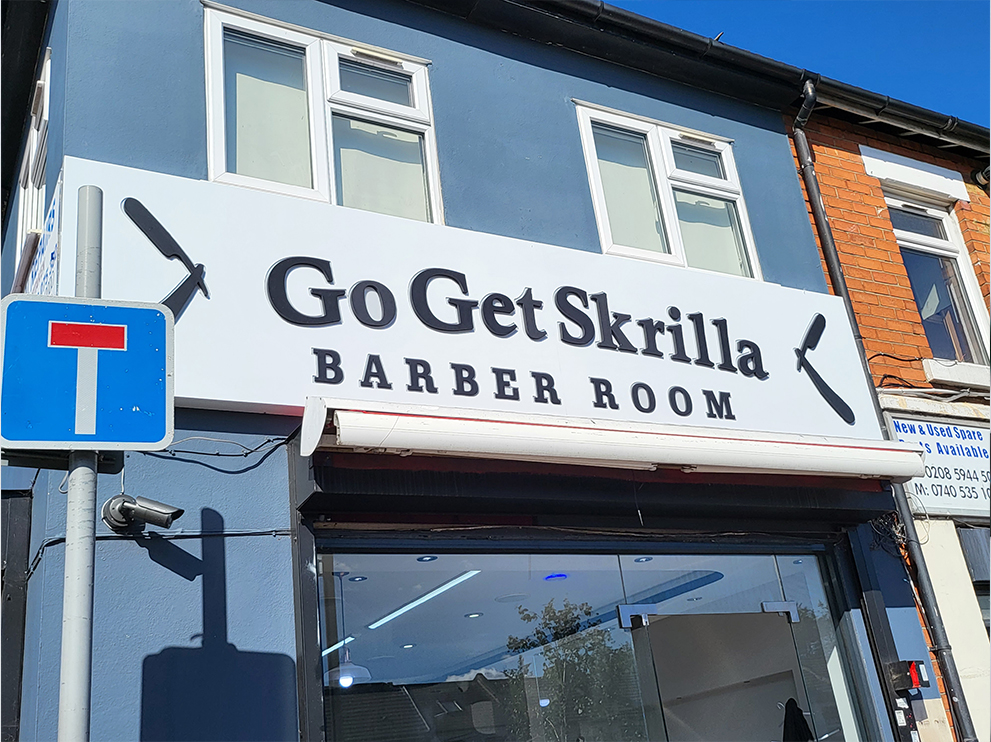
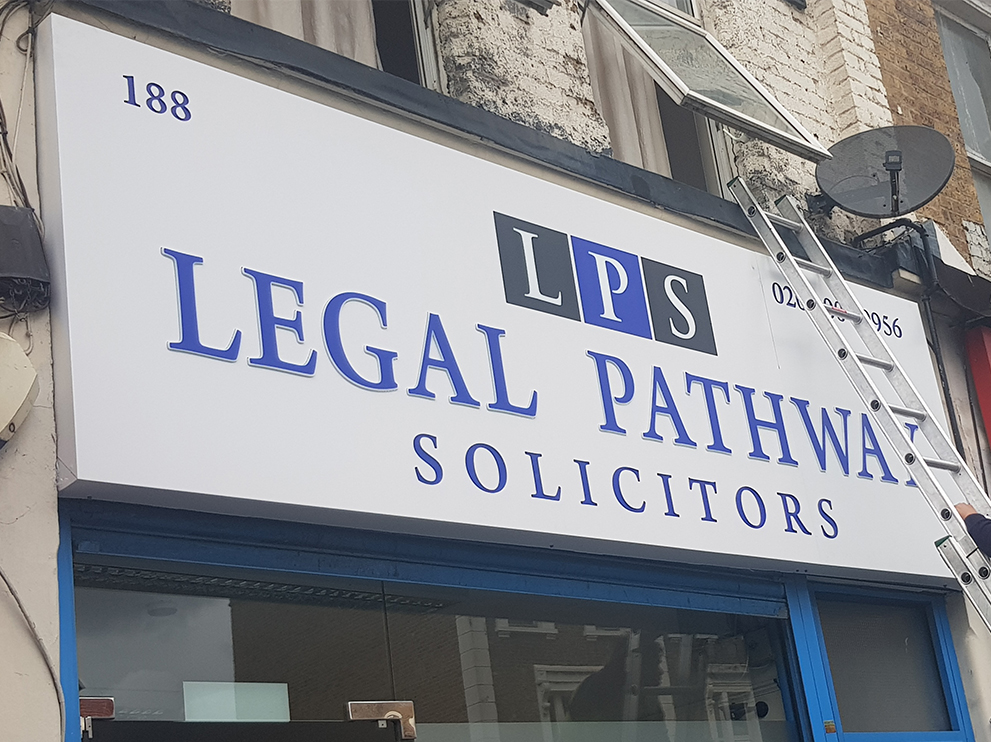
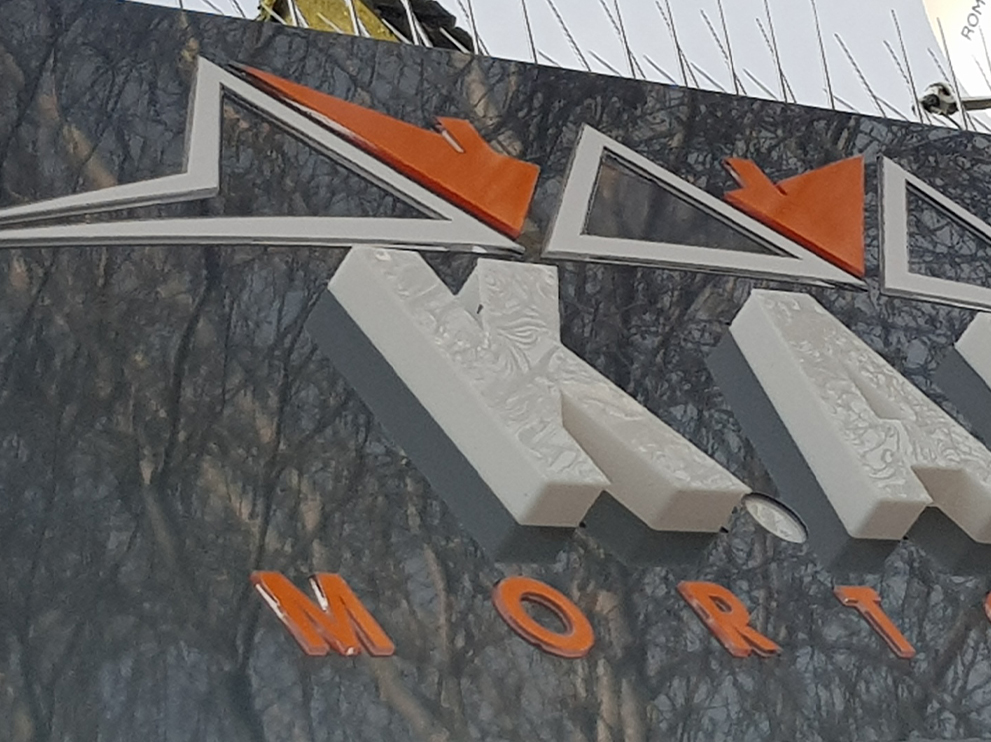
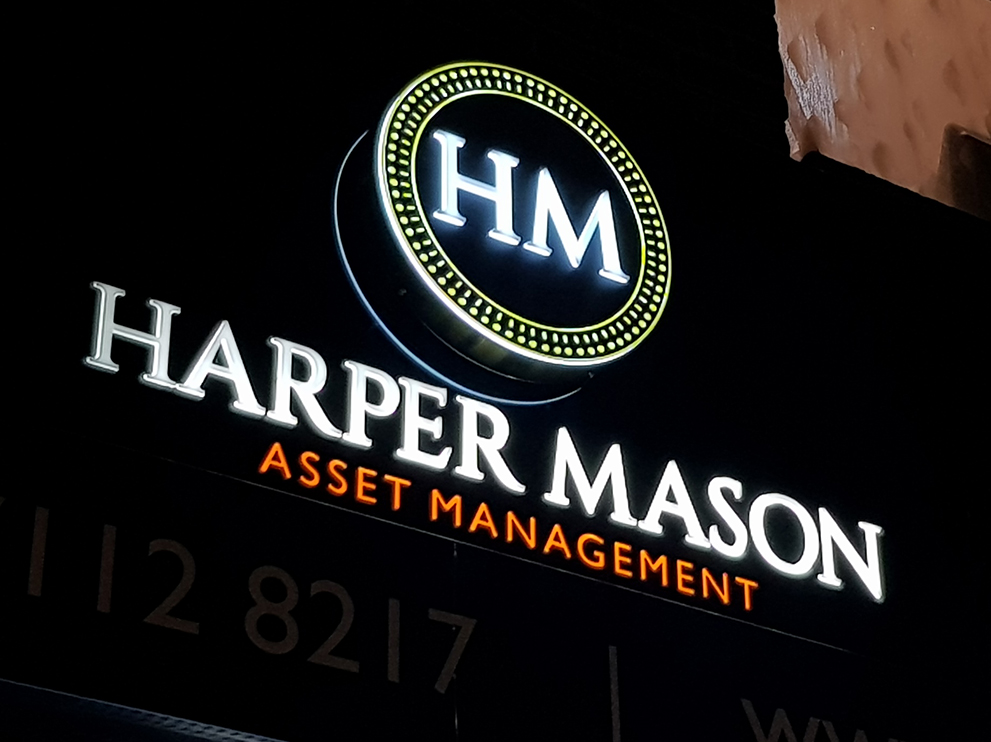
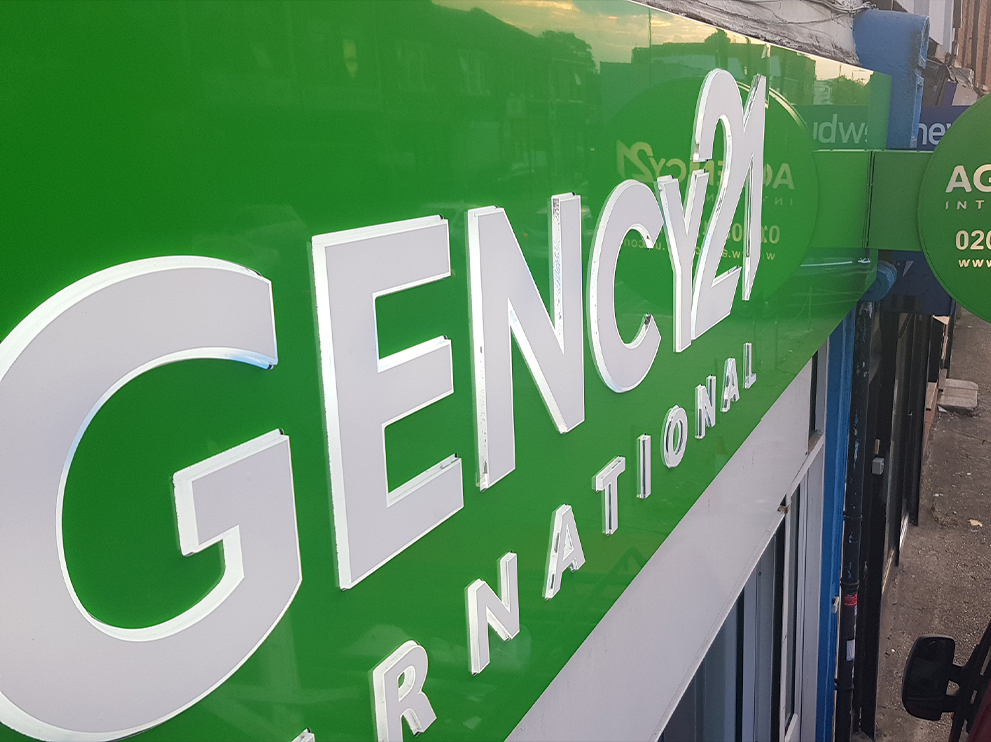
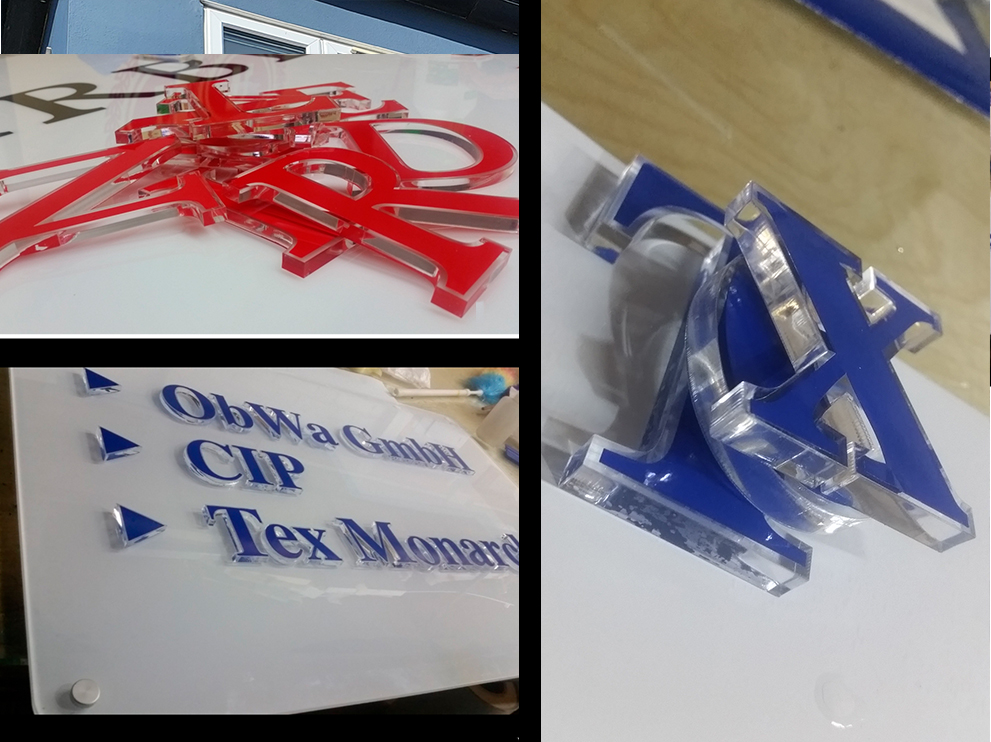
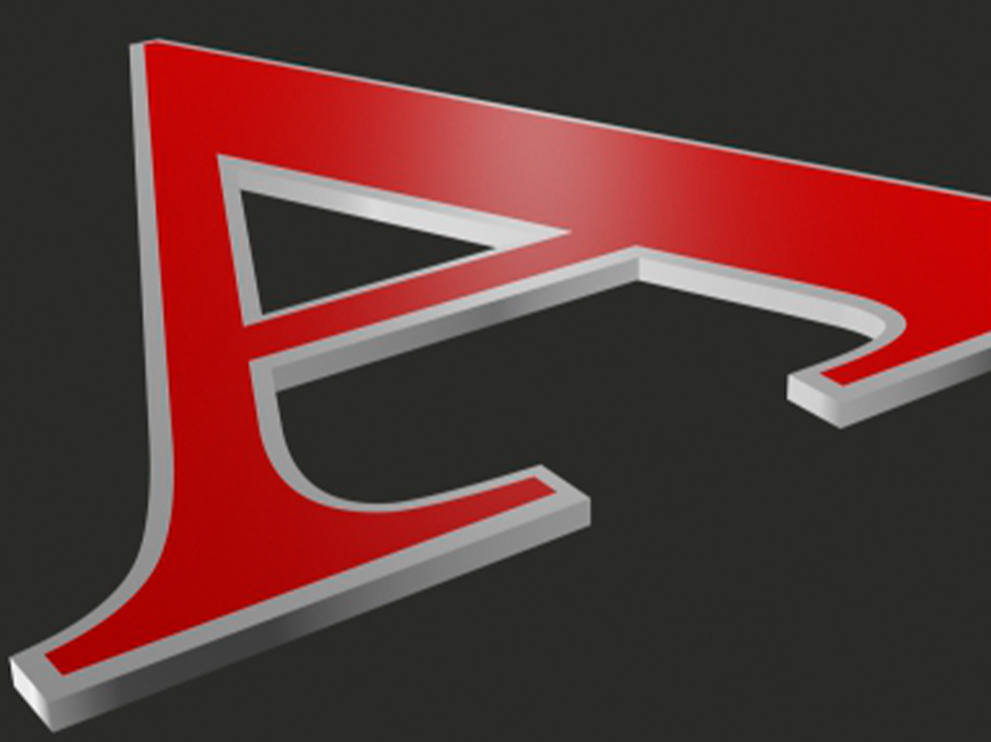
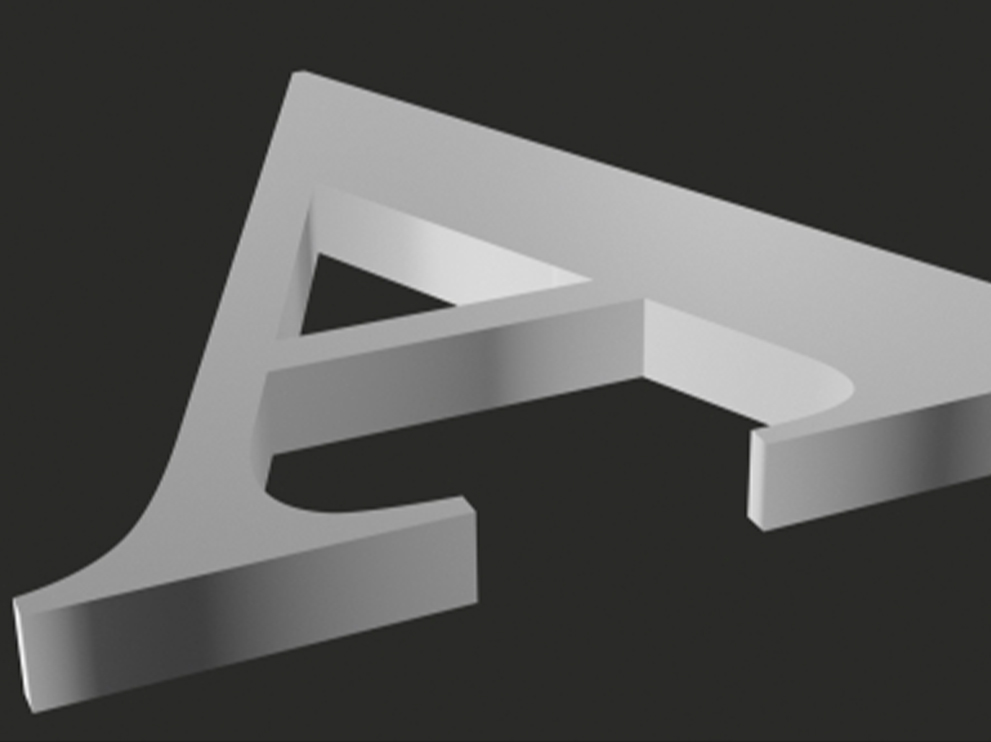
Illuminated Tray Signs with Push-through Letters
Push-through letters offer a unique and visually impactful signage solution. Unlike traditional signs, these letters aren’t directly affixed to the wall but are instead mounted on a metal backing, often an aluminum or dibond box. The backing features a precisely cut-out surface through which acrylic letters extend, creating a compelling three-dimensional effect that sets them apart from conventional signage. Notably, these letters illuminate not only from the front but also from all sides.
Push-Through Sign Manufacturing Process: Our innovative sign manufacturing process begins with the utilization of an aluminum tray system. We meticulously fret cut the face tray, and then we skillfully inlay each cavity of the tray with opal acrylic measuring 5mm or 10mm in thickness. This opal acrylic protrudes gracefully forward from the sign tray’s depth. Following this, we individually face each letter with an additional layer of vinyl or 3mm acrylic, allowing us to infuse distinctive colors into each letter. This meticulous craftsmanship creates the perfect conditions for light to elegantly emanate from the side and front of each letter, resulting in a pristine, high-quality finish for every sign we produce.
Our signs are thoughtfully designed and can be supplied with a full aluminum back tray to ensure durability and longevity. What sets our system apart is the internal LED illumination, which adds a touch of sophistication and brilliance to your signage. This method stands as our most favored among discerning sign buyers seeking a touch of elegance and a timeless appeal. Material Selection : High-quality materials are crucial for push-through Lettering signs. Typically, materials like Aluminium for sign body and 5mm or 10mm Acrylic (Opal or Clear), for letters are chosen for their durability and light-transmitting properties.
Cutting and Routing: The selected material is then cut and routed to create the base sign. Precision cutting tools, such as CNC routers, are used to achieve accurate shapes and sizes. Face and Back Panels: For push-through signs, two panels are typically used – The front panel is usually made from a translucent material like acrylic, allowing light to pass through. The back panel can be opaque and provides structural support.
Graphics and Letters: The graphics, letters, and logos are cut or etched into the front face panel using a CNC machine or laser cutting technology. These elements need to be meticulously crafted to ensure they fit snugly and securely within the sign.
Painting and Color Matching: Depending on the design, the graphics and letters may be cut to shape or full color printed and cut to match the branding specifications of the client. Precision color matching is essential to maintain brand consistency.
Assembly: The graphics and letters are assembled into the front face panel. This assembly involves intricate craftsmanship to ensure a seamless look.
Illumination: push-through sign are mostly designed to be illuminated, LED lights or other lighting elements are carefully integrated into the sign’s structure. These lights are strategically placed to evenly illuminate the graphics and letters.
Sealing and Weatherproofing: To protect the sign from the external weather conditions, it is sealed and weatherproofed. This step is crucial for outdoor signs that need to withstand rain, wind, and other environmental factors.
Quality Control: Each push-through sign undergoes a thorough quality control check to ensure it meets design specifications, is properly illuminated, and has no defects.
Installation: Once the sign passes quality control, it is ready for installation. Installation involves securing the sign to its designated location, whether it’s a storefront, a monument, or another structure.
Final Inspection: A final inspection is conducted after installation to verify that the sign is in perfect condition and functioning as intended.
